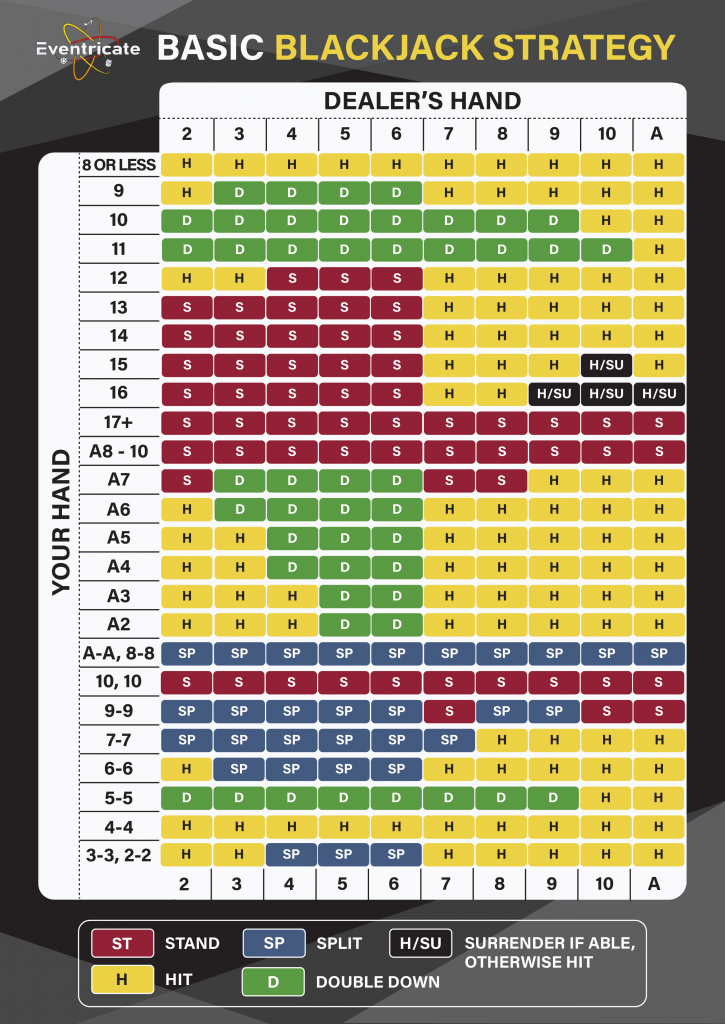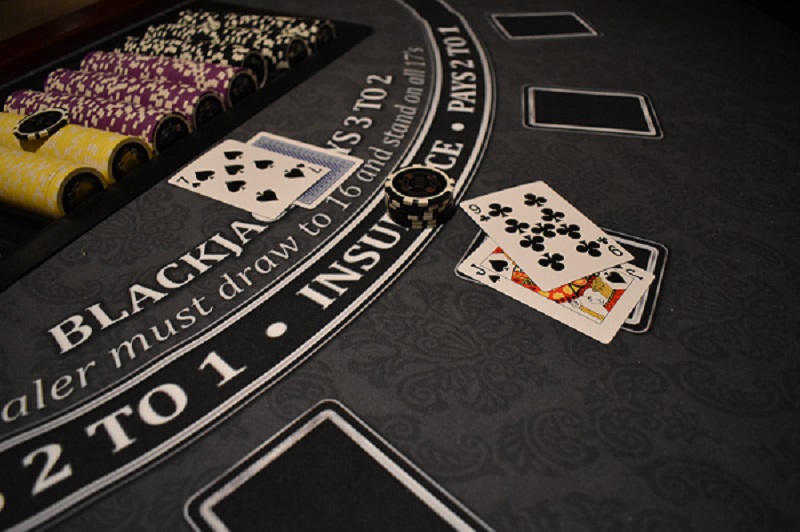
The object of Blackjack is to have Players cards total higher than the Dealer’s hand as near to 21 as possible without going over. The Dealer begins the game by dealing each player two cards and the Dealer one card face up and one card face down, placing one card on top of the other.
Cards are counted at their face value. Kings, Queens and Jacks count as ten. Aces count as one or eleven at your Players option. Winning hands are paid at even money. If the first two cards a Player is dealt total 21 (any 10-value card and an Ace), Player has a Blackjack. Blackjack pays one and a half times the Players bet. If the Dealer also has blackjack, the Player doesn’t lose, but could tie or Push(see below).
If Players are dealt any combination other than blackjack, they can either “stand” (take no more cards), or signal you for a “hit” (draw additional cards). Players signal for a hit is stating it out loud, or by brushing their hand towards them. The signal for standing is stating it out loud, or a right-to-left wave over their hand.
After all of the players have acted on their hands (either by hitting or standing), the Dealer will expose the “hole card” (facedown card) and take additional cards or stand according to the following rules:
- If Dealer total is 16 or less, he MUST hit until his hand totals 17 or more or BUSTS (exceeds a total of 21).
- If the Dealer BUSTS, all of the players still in the game win. If the Dealer does not bust and a Players card count is closer to 21 than the Dealer’s, the Player wins; if it is less, the Player loses.
- If you tie the dealer, it is called a PUSH and you neither win nor lose and the dealer will leave your original wager in the betting circle.
- Once the outcome of all hands has been determined, collect or pay out ALL bets FIRST, then collect all cards and set them face down in DISCARD TRAY, and begin the next hand.

